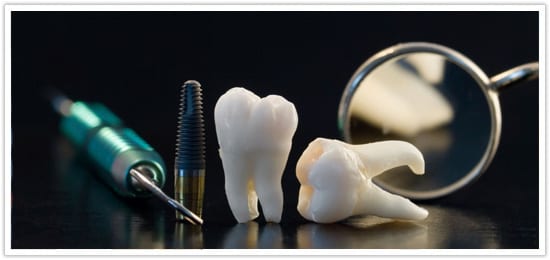Immediate Implant Placement
Immediate implant Placement, also known as immediate loading, involve the restoration of teeth immediately after extraction. In some cases, the process can take as much as 48 hours. Dentists realized there was a growing need for a process that could give quicker treatments that produced faster results. The process is favored by dentists because it is a highly predictable form of dental restoration.
It is important to note that in a few cases where the situation demands, it is not possible to perform this procedure in a single visit. This is true for patients who have cysts and abscesses due to unchecked advancements in teeth. In this situation the teeth are first plucked, removed and then given healing time. The implant should be done after the affected region is properly healed.
Understanding Immediate Implants Placement
Because immediate loading is a single stage technique, it offers simplified workflow to patients and dentists. Immediate loading also makes it possible to completely skip over complicated bone grafting procedures that are usually required to restore damage done due to resorption.
Immediate implant replacements have become fairly common because it offers many patients who have suffered detrimental bone loss a real shot at living out their best years in relative comforts. Dental implants provide patients with long-term and cost-effective solutions for their missing teeth and are growing popular because the surgical procedure is minimally invasive.
Psychological and Emotional Impact of Teeth Loss
The detrimental psychological effects of loss of teeth range from negligible to a state of neuroticism, where the patient frequently undergoes abrupt mood disorders such as anger, frustration, depression, and anxiety. A patient’s oral health affects them both psychologically, influencing how they look, chew, taste, speak and enjoy food.
It’s important therefore to take a look into immediate dental implants.
Success of Immediate ImplantsWhy it Works?

Effective results depend on the optimized use of taking detailed 3D images for the entire craniofacial region. Technological advances have made it possible for the process to take only a few minutes. The use of local anesthesia and platelet-rich fibrin accelerates the healing process and results in a painless experience to patients.
Immediate dental plants can be done on patients who don’t have bone mass. In the past, they were not considered ideal candidates for dental implants, but today our technicians can grow bone where needed.
Good Candidates for Dental Implant Surgery
The ideal candidates for dental implants are patients who have one of the following symptoms:
- Loss of teeth
- Loss of bone mass
- Sufficient damage to tooth
- Adequate bone in the jaw is needed to provide support to the dental implants
- Patient needs to be free of periodontal diseases and have otherwise healthy gum tissues
What You Can Expect with Dental Implant Procedures
The procedure depends on your condition. Your periodontist will create a tailored plan to meet your specific requirements, these include the following treatments:
Replacing a Single Tooth: Ideal for patients who are missing a single tooth. A single implant and crown can replace the lost tooth.
Replacing Multiple Teeth: Procedure is best done with implant supported bridges.
Restoring All Teeth: It is possible to restore all missing teeth by using an implant based bridge.
The immediate placement process is different from other procedures because implants are placed immediately after extraction of teeth. This usually happens in a single visit and is minimally invasive. It was common for dentists to dig through gums to expose the bone structure for modest results. The process has become more robust, giving patients a full set of teeth without risking infection to the bone and providing faster, safer results.
Dr Motiwala has more than 22 years of experience treating patients from USA, Uk, canada and australia.

Years Experience

Implants Completed

Full-Mouth Rehabs

Full-Mouth Implant Cases







